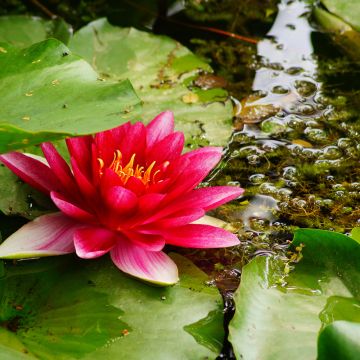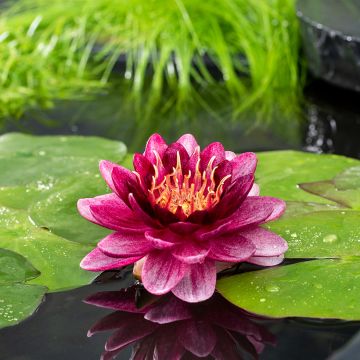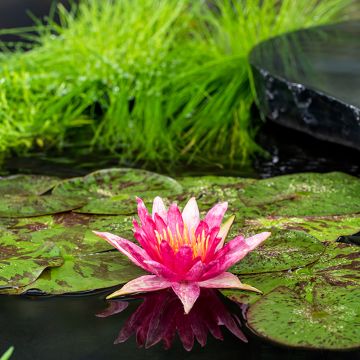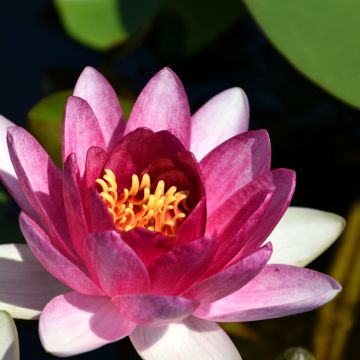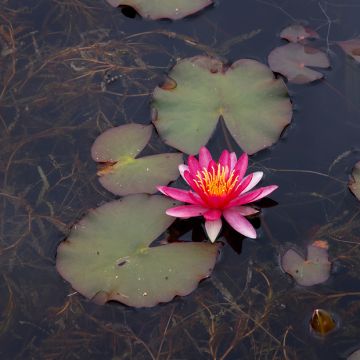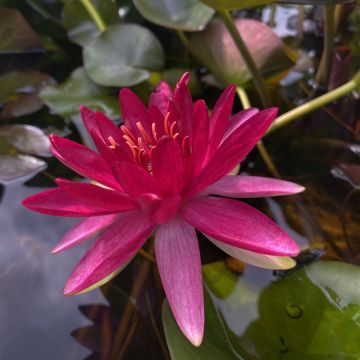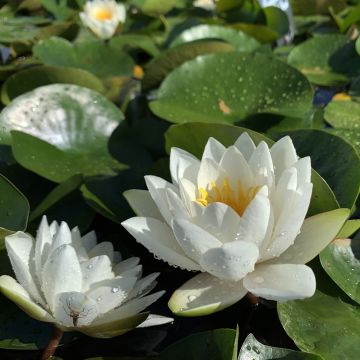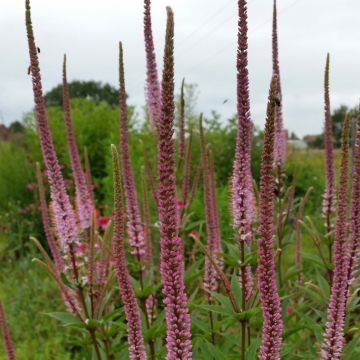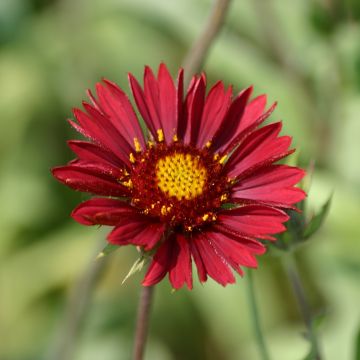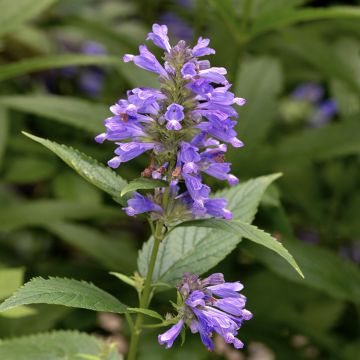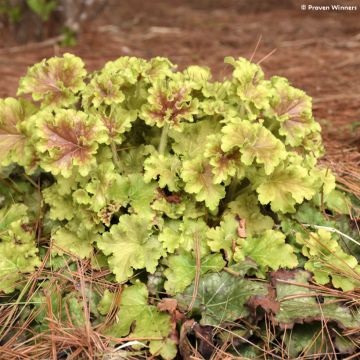Shipping country and language
Your country of residence may be:
Your country of residence is:
For a better user experience on our website, you can select:
Your shipping country:
Andorra
Austria
Belgium
Bulgaria
Canada
Chile
Croatia
Cyprus
Czechia
Denmark
Estonia
Finland
France
Germany
Greece
Hungary
Iceland
Ireland
Italy
Latvia
Lithuania
Luxembourg
Malta
Monaco
Netherlands
Poland
Portugal
Romania
Slovakia
Slovenia
Spain
Sweden
Switzerland
United Kingdom
We only deliver seed and bulb products to your country. If you add other products to your basket, they cannot be shipped.
Language:
French
German
Spanish
English
My Account
Hello
My wish lists
Plantfit
Log in / Register
Existing customer?
New customer?
Create an account to track your orders, access our customer service and, if you wish, make the most of our upcoming offers.


Scrophularia Cardinale Red
Scrophularia macrantha Cardinale Red
Scrophularia macrantha Cardinale Red
Large-flowered Figwort
Why not try an alternative variety in stock?
View all →Order in the next for dispatch today!
Dispatch by letter from €3.90.
Delivery charge from €5.90 Oversize package delivery charge from €6.90.
More information
This item is not available in your country.
Schedule delivery date,
and select date in basket
This plant carries a 12 months recovery warranty
More information
We guarantee the quality of our plants for a full growing cycle, and will replace at our expense any plant that fails to recover under normal climatic and planting conditions.
From €5.90 for pickup delivery and €6.90 for home delivery
Express home delivery from €8.90.
Does this plant fit my garden?
Set up your Plantfit profile →
Description
Scrophularia macrantha 'Cardinale Red' is a new variety derived from a beautifully named scrophularia across the Atlantic, 'Red Birds in a Bush'. Its small bright red-pink flowers, perched on dancing spikes, resemble the cheerfulness of a gathering of small birds. This flowering is renewed from June until the first frost, dominating a compact little bush. It is a hardy perennial plant when planted in light soil that does not retain too much water in winter. It is full of charm in summer beds or planted in a pot on a patio. It also works well in a semi-shaded rockery.
Scrophularia macrantha belongs to the Scrophulariaceae family, just like snapdragons, penstemons, and foxgloves. It is a short-lived perennial herbaceous plant (living for about 4 years), native to the mountains of southern New Mexico and Arizona. It is most often found on north-facing rocky slopes or cliffs, growing among various conifers, or in canyon gorges. It is a shade-loving species in its native land, which tolerates drought once established. In a more humid climate, it will appreciate full sun and require well-drained soil.
The 'Cardinale Red' selection stands out with a more compact habit and particularly abundant and colourful flowering. The plant quickly forms a bushy clump reaching about 50 to 60cm (20 to 24in) in height and 40cm (16in) in width. Sturdy, hollow, square-sectioned stems emerge from the stump, which becomes woody over the season. They bear deciduous, waxy, long triangular leaves with rough edges and rounded teeth. Their colour is a fairly dark grey-green. The flowering period is very long, starting in June and not ending until October, if the soil remains somewhat moist in summer. The inflorescences are branched terminal panicles bearing small bilabiate and swollen flowers, 2 to 3cm (1in) long, resembling the body of a small parakeet. They are a bright red-pink colour with a small white lip. The flowering attracts numerous pollinators and is followed by the formation of seeds that will germinate the following spring in light soils.
This scrophularia deserves a home in the garden, in a not too arid rockery, or even under conifers in warm regions. It is a mountain plant of rather dry climates, just like microphylla shrubby sage and hybrid penstemons, which appreciate somewhat similar environments. Scrophularias are natural-looking plants, with beautiful foliage, and vibrant and long-lasting flowering. They have both an aesthetic and ecological appeal. Scrophularia 'Cardinale Red' pairs well with many perennials such as daylilies, tall sedums, heart-leaved asters, Euphorbia characias, or grasses, as well as small bushes like caryopteris, which will accompany it until late in the season.
Scrophularia macrantha Cardinale Red in pictures
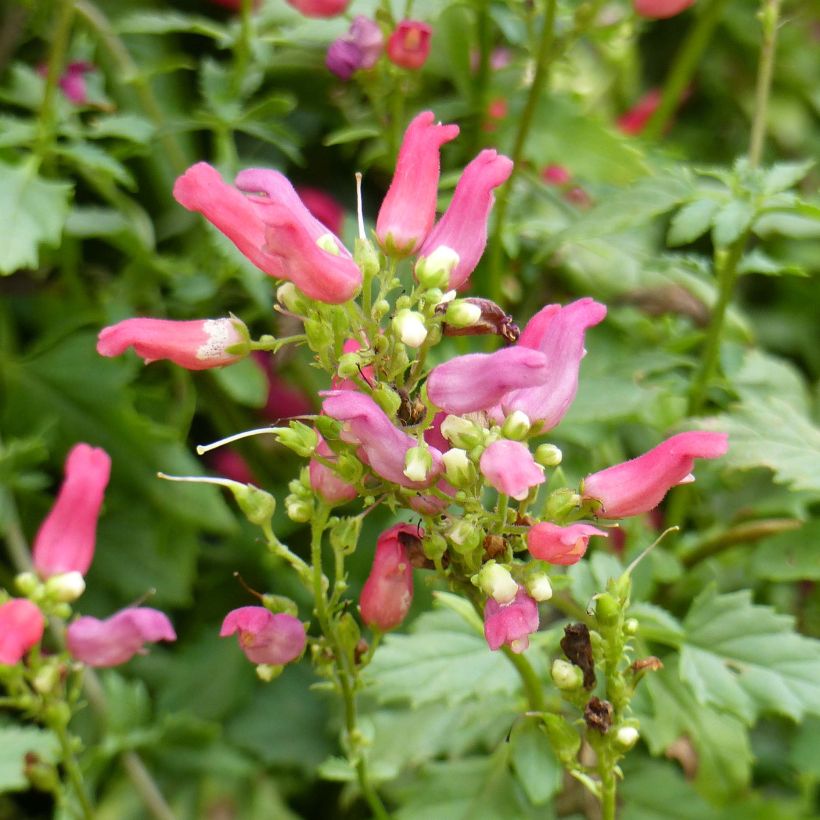

Flowering
Foliage
Plant habit
Botanical data
Scrophularia
macrantha
Cardinale Red
Scrophulariaceae
Large-flowered Figwort
North America
Other Aquatic perennials
Planting and care
Scrophularia 'Cardinale Red' is a shade-loving plant in hot and sunny regions. It can tolerate full sun in cooler and more humid climates. Plant it in spring so that it has time to establish itself before winter. It requires well-drained, even rocky or stony, slightly acidic, neutral soil without excessive limestone. Compact and clayey soil that retains moisture in winter strongly affects its hardiness. Water regularly to help it establish, especially in dry summers. Once well established in slightly deep soil, it tolerates summer drought well. Prune the bush lightly at the end of winter.
Planting period
Intended location
Care
This item has not been reviewed yet - be the first to leave a review about it.
Summer flowering perennials
Haven't found what you were looking for?
Hardiness is the lowest winter temperature a plant can endure without suffering serious damage or even dying. However, hardiness is affected by location (a sheltered area, such as a patio), protection (winter cover) and soil type (hardiness is improved by well-drained soil).

Photo Sharing Terms & Conditions
In order to encourage gardeners to interact and share their experiences, Promesse de fleurs offers various media enabling content to be uploaded onto its Site - in particular via the ‘Photo sharing’ module.
The User agrees to refrain from:
- Posting any content that is illegal, prejudicial, insulting, racist, inciteful to hatred, revisionist, contrary to public decency, that infringes on privacy or on the privacy rights of third parties, in particular the publicity rights of persons and goods, intellectual property rights, or the right to privacy.
- Submitting content on behalf of a third party;
- Impersonate the identity of a third party and/or publish any personal information about a third party;
In general, the User undertakes to refrain from any unethical behaviour.
All Content (in particular text, comments, files, images, photos, videos, creative works, etc.), which may be subject to property or intellectual property rights, image or other private rights, shall remain the property of the User, subject to the limited rights granted by the terms of the licence granted by Promesse de fleurs as stated below. Users are at liberty to publish or not to publish such Content on the Site, notably via the ‘Photo Sharing’ facility, and accept that this Content shall be made public and freely accessible, notably on the Internet.
Users further acknowledge, undertake to have ,and guarantee that they hold all necessary rights and permissions to publish such material on the Site, in particular with regard to the legislation in force pertaining to any privacy, property, intellectual property, image, or contractual rights, or rights of any other nature. By publishing such Content on the Site, Users acknowledge accepting full liability as publishers of the Content within the meaning of the law, and grant Promesse de fleurs, free of charge, an inclusive, worldwide licence for the said Content for the entire duration of its publication, including all reproduction, representation, up/downloading, displaying, performing, transmission, and storage rights.
Users also grant permission for their name to be linked to the Content and accept that this link may not always be made available.
By engaging in posting material, Users consent to their Content becoming automatically accessible on the Internet, in particular on other sites and/or blogs and/or web pages of the Promesse de fleurs site, including in particular social pages and the Promesse de fleurs catalogue.
Users may secure the removal of entrusted content free of charge by issuing a simple request via our contact form.
The flowering period indicated on our website applies to countries and regions located in USDA zone 8 (France, the United Kingdom, Ireland, the Netherlands, etc.)
It will vary according to where you live:
- In zones 9 to 10 (Italy, Spain, Greece, etc.), flowering will occur about 2 to 4 weeks earlier.
- In zones 6 to 7 (Germany, Poland, Slovenia, and lower mountainous regions), flowering will be delayed by 2 to 3 weeks.
- In zone 5 (Central Europe, Scandinavia), blooming will be delayed by 3 to 5 weeks.
In temperate climates, pruning of spring-flowering shrubs (forsythia, spireas, etc.) should be done just after flowering.
Pruning of summer-flowering shrubs (Indian Lilac, Perovskia, etc.) can be done in winter or spring.
In cold regions as well as with frost-sensitive plants, avoid pruning too early when severe frosts may still occur.
The planting period indicated on our website applies to countries and regions located in USDA zone 8 (France, United Kingdom, Ireland, Netherlands).
It will vary according to where you live:
- In Mediterranean zones (Marseille, Madrid, Milan, etc.), autumn and winter are the best planting periods.
- In continental zones (Strasbourg, Munich, Vienna, etc.), delay planting by 2 to 3 weeks in spring and bring it forward by 2 to 4 weeks in autumn.
- In mountainous regions (the Alps, Pyrenees, Carpathians, etc.), it is best to plant in late spring (May-June) or late summer (August-September).
The harvesting period indicated on our website applies to countries and regions in USDA zone 8 (France, England, Ireland, the Netherlands).
In colder areas (Scandinavia, Poland, Austria...) fruit and vegetable harvests are likely to be delayed by 3-4 weeks.
In warmer areas (Italy, Spain, Greece, etc.), harvesting will probably take place earlier, depending on weather conditions.
The sowing periods indicated on our website apply to countries and regions within USDA Zone 8 (France, UK, Ireland, Netherlands).
In colder areas (Scandinavia, Poland, Austria...), delay any outdoor sowing by 3-4 weeks, or sow under glass.
In warmer climes (Italy, Spain, Greece, etc.), bring outdoor sowing forward by a few weeks.
